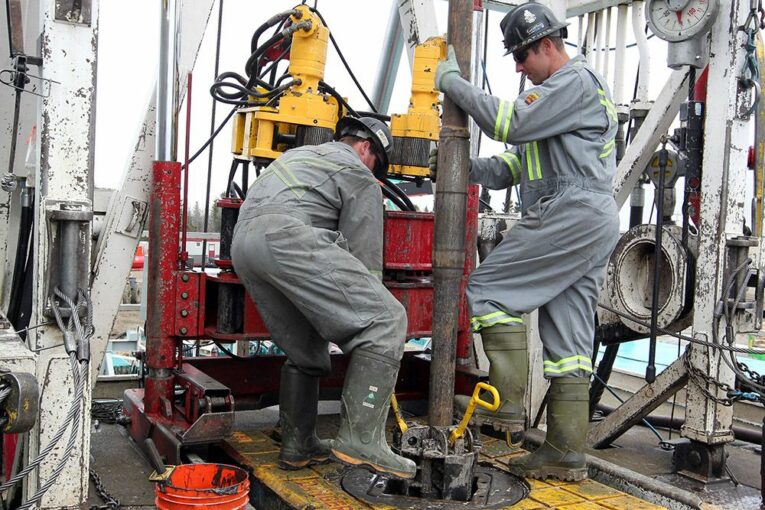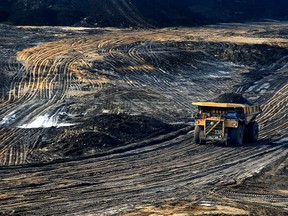
Where’s the boom?
This provocative question is also the title of a new report by Alberta Central’s chief economist about the state of the province in a new era of high energy prices.
The study notes revenues from oil produced in the province have surged this year, averaging about $12 billion a month, or about 75 per cent above levels reported eight years ago. Buoyant oil prices and increased production are having an effect, although Alberta isn’t seeing a major economic boom to match the one that unfolded a decade ago.
Report author Charles St-Arnaud said lower capital spending by petroleum producers from record levels seen in 2014, along with the return of more cash to investors — with most shareholders residing outside Canada — and a sharper focus on expenditures to improve efficiency have altered the dynamic in Alberta.
“Despite oil production and revenues reaching record levels, Alberta is far from experiencing an economic boom similar to what we saw in the mid-2010s and the 2000s,” the study states.
“This is because the nature of the oil industry has changed, likely forever, and its impact on the economy has weakened.”
This shift has consequences for Alberta’s economic outlook. Growth is now less sensitive to gyrating oil prices and the “lack of boom may also mean a small bust when oil prices drop, leading to reduced economic volatility,” the report notes.
The absence of an economic boom is also the direct result of a smaller share of oil revenues staying within the province, it adds.
However, this doesn’t mean the province isn’t benefiting from rising energy prices, St-Arnaud said in an interview.
After growing by about six per cent last year, he expects Alberta’s economy to expand by about 4.2 per cent in 2022. However, the number of jobs in the industry is still lagging behind 2014 levels, and the spillover effect on the construction sector has also been muted, he said.
Recommended from Editorial
-

Oilsands producers put up ‘absolute blockbuster’ quarter with $12.5B profit
-

Canada ‘falling behind’ in race to attract carbon capture investments
-

Alberta’s oil and gas industry struggling for entry-level workers during boom
The current upturn “is probably as good as it gets” given other forces at play, including energy transition and an expected peak in oil demand in the coming years.
“If oil prices suddenly could go to $200, then it might be a game-changer. But what’s clear in my mind is that oil companies are no longer in the business of expanding production as rapidly as they used to,” St-Arnaud added.
Oil and gas prices have risen sharply this year after Russia’s invasion of Ukraine. The five largest oilsands producers in Canada generated $21.8 billion in net earnings in the first half of the year, according to consultancy Wood Mackenzie.

St-Arnaud noted the largest oilsands producers have returned about $20 billion to investors through dividends and share buybacks over the past year, compared to about $4.5 billion in 2014.
Only about 25 per cent of shareholders in these companies are Canadian, “meaning that most of (the) oil revenues are leaving the country,” he wrote.
Spending has rebounded in the sector this year, although not to the heights seen during the last wave of major oilsands construction, which was fuelled in part by international producers and investors.
The Alberta Energy Regulator expects upstream industry capital spending will hit $29 billion this year, up more than 40 per cent from 2021 levels, although well down from the $61 billion spent in 2014.
It isn’t hurting provincial coffers. The province expects to collect a record $28.4 billion in non-renewable resource revenue in this budget year.
Royalty revenues are based, in part, on crude prices, and many oilsands projects have moved into a higher payout category in recent years.
“This is finally the pot of gold at the end of the rainbow,” said Richard Masson, former CEO of the Alberta Petroleum Marketing Commission.
“We got the jobs and investment early on . . . now that we’re finally at payout, we are reaping the benefits of that.”
Increased concerns surrounding energy security have also changed the dynamic and could lead to continued growth in the oilsands, said Masson, an executive fellow at the University of Calgary’s School of Public Policy.
“This (report) is a reminder that, while the future of the energy sector is bright, we can’t take future growth for granted,” Alex Puddifant, press secretary for Energy Minister Sonya Savage, said in a statement.
Those in the sector acknowledge large new oilsands projects aren’t moving ahead, pointing out pipeline bottlenecks and tepid prices after 2014 acted as a major drag on developments. Decarbonization has also complicated the picture, with companies more reluctant to make longer-life capital investments.
Incremental oilsands production has climbed by about 250,000 barrels per day (bpd) since 2019 to average about 3.2 million bpd this year. It’s expected to grow to about 3.6 million before the end of the decade, said Kevin Birn, a vice-president with S&P Global Commodity Insights.
“Oilsands are large-scale industrial projects, and to remain competitive and contribute to Canada’s decarbonization they will need to decarbonize,” Birn said.
“This can also help drive incremental economic activity in the region.”
That’s what the oilsands producers and the province are banking on.
Last week, a group of the largest oilsands producers said the first phase of its plan to lower emissions by the end of this decade would cost an estimated $24 billion, including $16.5 billion for its foundational carbon capture and storage hub.
The development by the Pathways Alliance is projected to create 15,000 to 20,000 direct jobs during construction.
“The industry is going to be different in the future. It may be more mature, more focusing on decarbonization rather than greenfield expansion, but the industry is still going to be a significant player in the province for decades to come,” said Mark Cameron, a vice-president with the Pathways Alliance.
“And there are new kinds of opportunities emerging that are different from the old ones.”
Chris Varcoe is a Calgary Herald columnist.
You can read more of the news on source
